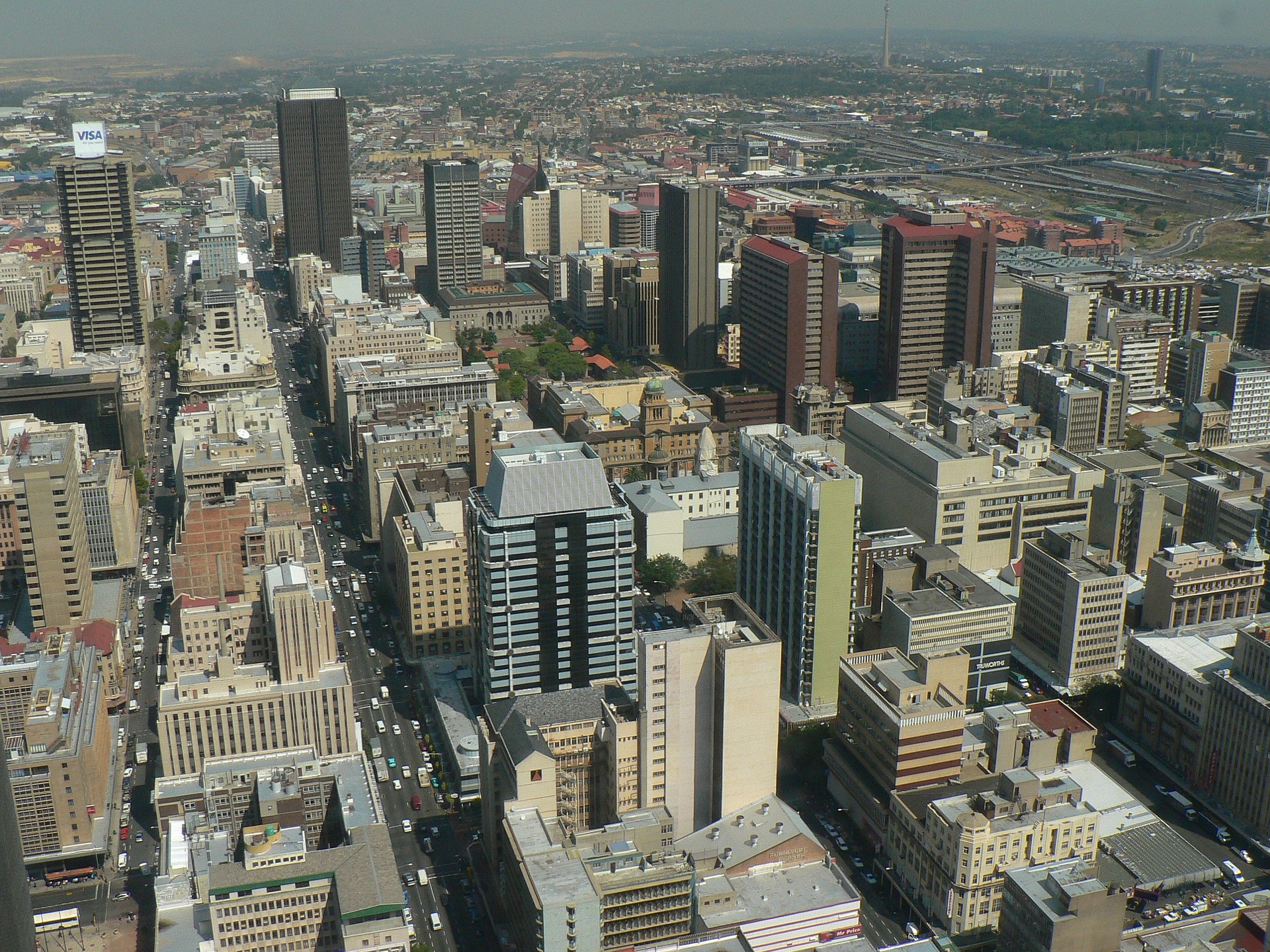We are in a historical time of momentous changes in macroeconomic thinking that have been driven by the need to respond to crises, said macroeconomics expert Dr Seeraj Mohamed, while speaking at the first of a series of Macroeconomic Policy Dialogues hosted by the Human Sciences Research Council. Mohamed and fellow economists Gilad Isaacs and Alexis Habiyaremye argued that fiscal stimulation is a critical and underutilised tool for overcoming and preventing socioeconomic crises like that precipitated by the COVID-19 pandemic. By Andrea Teagle
Despite the global shift away from neoliberal macroeconomics, South Africa is still anchored in neoliberal economic thought, favouring macroeconomic stabilisation, fiscal austerity and minimal state intervention. This ‘old view’ is encapsulated by the Washington Consensus, according to macroeconomics expert Seeraj Mohamed. The agreement reflected a ‘one-size-fits all’ set of free-market policy reforms that the World Bank and the International Monetary Fund (IMF) promoted across developing countries in the 1980s.
Mainstream economic organisations, including the IMF, have since recognised the shortcomings of a narrow focus on stability, said Gilad Isaacs, a director at the Institute for Economic Justice. By the late 90s, it was widely recognised that growth-centric policies had largely failed to alleviate poverty and inequality. In its 2006 interim report, the IMF-World Bank development committee stated:
“In a developmental context, fiscal policy serves as both an instrument of macroeconomic stabilisation and as an instrument to achieve growth and poverty reduction objectives. In many developing countries, however… growth and poverty reduction objectives were under-emphasised.”
In fact, according to Mohamed, the neoliberal push to privatise elements of the care economy – basic services, education and health – caused deep inequalities in many developing countries.
“Now we’re seeing the state, in many countries including our own, having to step in and deal with not only the problems of the pandemic and the economic consequences of the pandemic, but a cumulative range of problems that have developed over a long period of time.”
Stimulation packages
Many countries, including South Africa, scrambled to keep their economies afloat during the pandemic through fiscal stimulation packages. Fiscal packages aim to stimulate the economy by encouraging an uptick in consumption. In the medium term, prices will adjust to reflect the increase in money supply; however, proponents of fiscal stimulus argue the initial expansion of output has its own long term impacts, Alexis Habiyaremye, former senior research specialist at the HSRC, explained.
This approach is frowned upon by neoliberal theory. Neoliberalist thought holds that monetary policy should dominate fiscal policy, which should be used only in the very short run, if at all, Mohamed said. The neoliberal argument against fiscal stimulus is that people might not respond to it by consuming more goods and services. Anticipating tax hikes, they might choose to save instead, sending the economy into a deeper slump.
For this reason, Habiyaremye said, cash injections are most effective when targeted at low-income groups whose spending even on basic goods and services is constrained, and who do not pay taxes. However, the government has not invested in deliberately pro-poor macroeconomic stimulus packages.
In a newly published UNU-Merit discussion paper, Habiyaremye and colleagues examine the experiences of 10 developing countries who implemented stimulation packages after the 2007-2009 Great Global Recession. The team, which also included the HSRC’s Dr Peter Jacobs, found that fears of sustained inflation did not play out. With the exception of Kenya, the countries (which spanned Africa, East Asia and Latin America) experienced a relatively small increase in short term inflation that settled in the medium range of their respective inflation targets.
However, during the virtual policy dialogue, Habiyaremye emphasised that injecting money into the economy does not necessarily reduce poverty, if it is not coming on top of existing poverty reduction programmes.
Even pro-poor, targeted stimulus packages are not enough; rather, they should form part of the foundation of an equitable post-COVID economy, responsive to the needs of local communities, write Habiyaremye and his colleagues.

Sustainable level of borrowing?
“What are some kind of guidelines, rules of thumb or just sensible thinking as to what are sustainable levels of borrowing?” asked dialogue discussant Prof Fiona Tregenna, the DST/NRF South African Research Chair in Industrial Development.
Measuring the sustainability of borrowing extended beyond simply the resulting GDP growth minus the cost of borrowing. The speakers agreed that critical to the question of sustainable debt was the way in which the government allocated its limited fiscal resources. Although categorised as consumption, expenditure on basic services such as education could be viewed a socioeconomic investment towards a more equitable future South Africa. Money spent on infrastructure and public capital goods is more likely to have long-term impacts by changing the structure of the economy.
“We don’t have [debt] levels that are outrageously high; what we have are costs that are higher than global averages,” Isaacs said. “Policy needs to think about borrowing costs, which is a quantitative easing issue, possibly, which is a capital flows issue…”
In the 2006 interim report, the IMF and World Bank note that “there is no simple relationship between debt and growth… . Moreover, there is no single threshold for debt ratios that can delineate the ‘bad’ from the ‘good.’”
Mohamed observed that developed countries were revisiting the assumption that the central bank should remain independent: since the 2007-2009 financial crisis, central banks were increasingly financing government spending directly. He charged that the South African government was hindered by an unwillingness to undertake real macroeconomic analyses, or to consider alternative perspectives to old mainstream economic thinking.
Drawing on results from the UNU-Merit discussion paper, Habiyaremye argued that the government should seek to reach an agreement with the private sector to jointly finance the stimulus, with a view to reducing enduring unemployment and restructuring the economy equitably.
New macroeconomic goal?
Isaacs argued that South Africa needs a new macroeconomic goal to replace that of stabilisation. “Macro policy should be about an overall vision for transforming the form of the economy as a whole, and not simply stabilising the existing economy.”
In South Africa, macroeconomic policy guided by stabilisation has resulted in pro-cyclical spending, alongside a restrained monetary policy regime characterised by inflation targeting, he said. “What this has led to is a potential disconnect between the objectives being advanced in other policy areas, like industrial policy… and in labour market policy.”
He said South Africa needed to align its macroeconomic policy with its other policy imperatives. Possible future macroeconomic goals, he suggested, might be poverty alleviation, decent work and structural transformation.
Structural transformation
While the growth period of 2003–2007 before the recession has been upheld as a success of South Africa’s macroeconomic policy, Mohamed argued that the type of growth that occurred was “hugely negative” for the people of South Africa. The expansion of the financial sector relative to the economy as a whole – a process called financialisation – fuelled GDP growth, but also saw a contraction in employment.
“When we talk about the financial sector being advanced and developed in South Africa… advanced for what?” he challenged. “Developed for what? Does it actually increase our systemic risk? Has it helped us build an inclusive economy?”
Referring to efforts to respond to the economic impacts of COVID-19, Mohamed added that the same applies to business confidence. “What does… getting South African businesses to invest more in this current period actually mean…? Is it going to solve the unemployment problems?”
Shifts in the global economy, driven by the technological advancements of the so-called fourth industrial revolution, required that South Africa examine its role within global value chains and the global division of labour, said Mohamed.
The speakers agreed that COVID-19 had demonstrated the need for South Africa to critically challenge its traditional macroeconomic thinking, and create a blueprint for how to move towards a more resilient, more inclusive, and more sustainable economy.
Note: The webinar was part of an HSRC dialogue series promoting evidence-informed solutions to diverse macroeconomic puzzles hindering transformational development in South Africa, our continent and beyond. The dialogues also aim to strengthen cooperation with policy practitioners, academia and non-governmental stakeholders.
Further reading: Macroeconomic stimulus packages and inequality in developing countries: Lessons from the 2007-2009 crisis for South Africa, by Alexis Habiyaremye, Peter Jacobs, Pelontle Lekomanyane and Olebogeng Molewa, HSRC Review, April 2020
Rethinking growth-unemployment puzzles in the COVID-19 recession: Contextualising SA’s macroeconomic policy options, by Peter Jacobs, Pelontle Lekomanyane and Karabo Nyezi, HSRC Review, April 2020.


